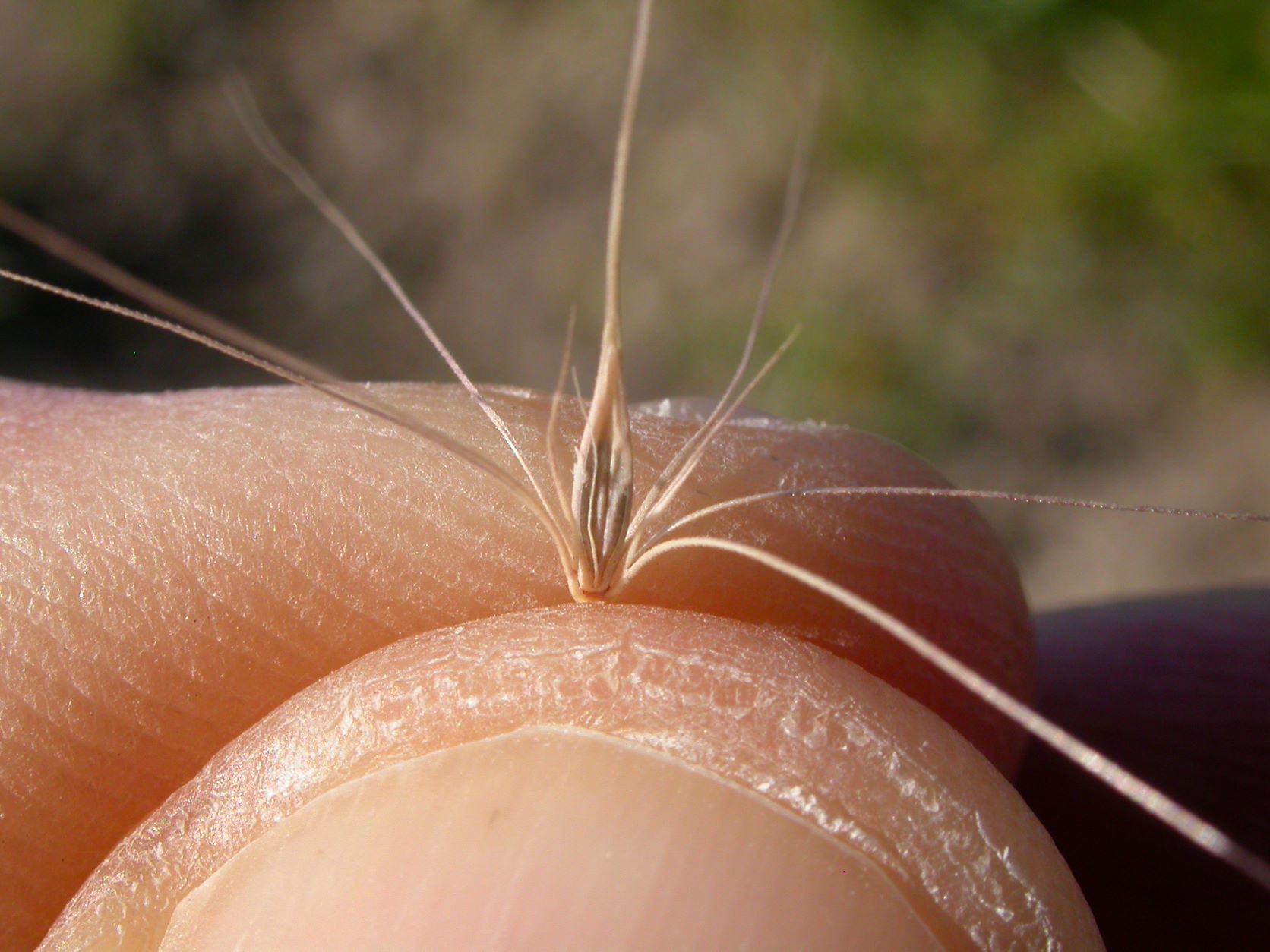Foxtail Barley
Foxtail barley is a native plant found in Calgary that thrives in disturbed soil like constructions sites and roadsides with low nutrients and high salinity (salt). This native plant is part of a healthy prairie ecosystem but can cause issues for dogs. The seeds, known as awns, dry out in the fall, break apart and blow around. The awns have sharp tips which helps them stick to new locations and grow by burrowing into the ground. They can become stuck in fur, paws, the mouth, eyes and noses—creating a painful and potentially dangerous issue for pets.
The City and foxtail barley
Foxtail barley is a native species, which means it is not a weed, and that we do not typically remove it.
That being said, The City:
- Raises awareness of this native plant and the potential issue for dogs
- Mows off-leash areas, parks and other green spaces to reduce the number of plants
- Is trialing the use of plantings with micro clover and/or urban grass seed mixes to establish turf stands that are more suitable for their location. Micro clover and urban grasses help to minimize mowing, outcompetes weeds and feeds bees and other pollinators.
- Has amended the Community Standards Bylaw regulations on herbaceous grasses, requiring nuisance property owners to control foxtail barley over 8 cm, before it poses a hazard to local pets. More information on foxtail barley regulations can be found here
What you can do
On your property and in your garden
- Cut foxtails short to prevent them going to seed
- Pull them out by hand
- Pour boiling water on plants to kill them
For your dog
- Avoid walking through areas with foxtail barley if possible and reduce the risk by keeping your dog on a leash
- Keep dog hair/fur short around paws, toes and armpits
- After walking: check dog for any foxtail awns, especially in ears, crevices or folds of skin, paws, and mouths.
- Remove awns with tweezers
- If dog is sneezing, shaking head, scratching, rubbing or chewing right after a walk, take them to a vet immediately to be safe
*Photos provided by Andrey Zharkikh and Matt Lavin

This is a foxtail awn

